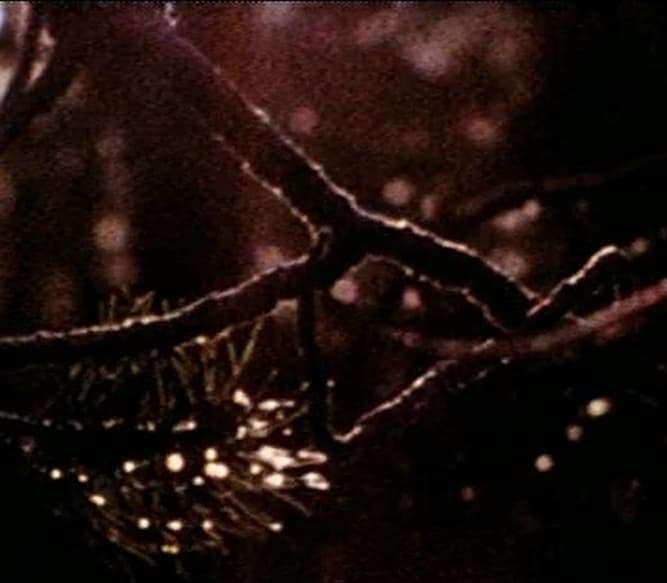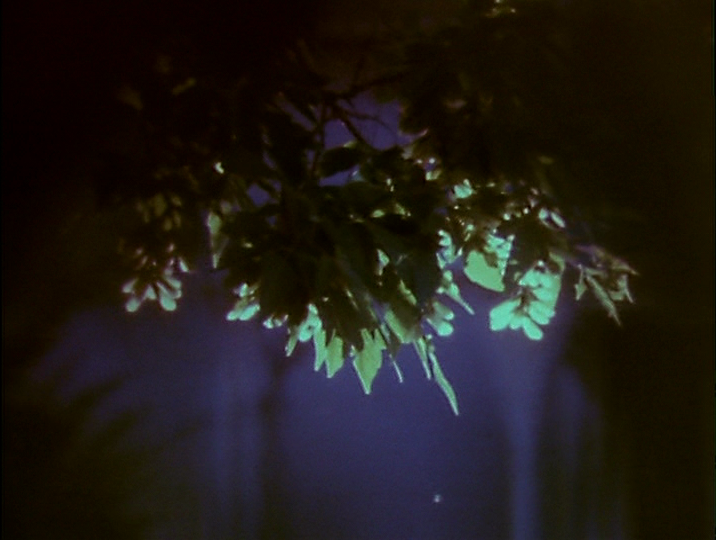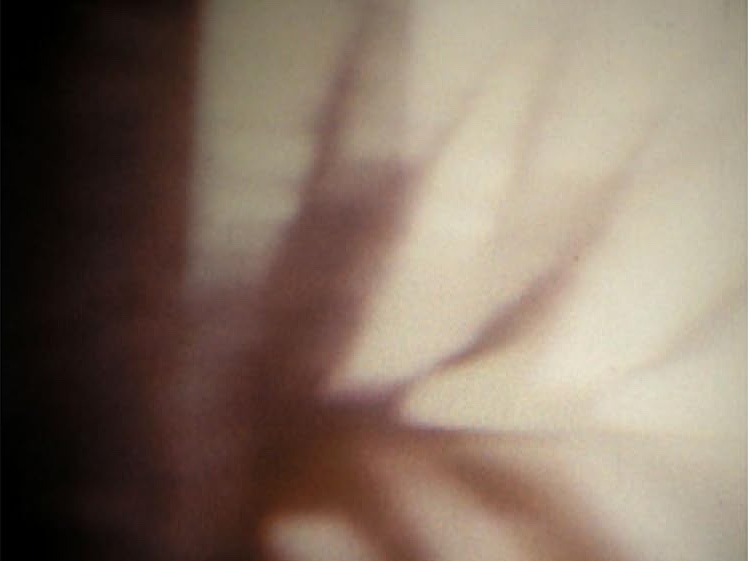
Passage Through: A Ritual (1990) by Stan Brakhage
Sunday, May 26, 2024, 7:30 pm
Stan Brakhage’s Passage Through: A Ritual
presented by John Powers
Presented in association with CounterPulse
Admission: $15 General / $12 Cinematheque Members
Event tickets here
Created over fifty years of ceaseless activity, filmmaker Stan Brakhage’s body of nearly 400 films is notable for its dazzling kineticism, expressive camerawork and rich use of optical and painterly abstraction and for its emphasis on direct, primal and pre-linguistic vision as direct conduit to the nervous system and as the conveyor of experience and meaning. In this radical centering of vision, Brakhage promoted a general aesthetics of cinematic silence and the abstraction of experience through the attenuation of the auditory. Considering his work to be expressive of “moving visual thinking” Brakhage was, of course, deeply influenced by music and the experience of sound. It is not surprising then that his rare forays into sound filmmaking have resulted in films which are among the most unique sound/image works in the history of the medium.
An anomalous entry in Brakhage’s oeuvre, Passage Through: A Ritual (1990) pairs Fluxus composer Philip Corner’s long form solo piano piece Through the Mysterious Barricade: Lumen (after F. Couperin)—itself composed in response to Brakhage’s The Riddle of Lumen (1972)—to a pointilist stream of image bursts (Brakhage: “the most exacting editing process ever”) punctuating an experience of cinematic darkness. Engaging rhythmically with Corner’s rejoinder, Brakhage’s Passage Through… presents contrapuntal dialog with the obsessions with sound/image synchrony of Sharits and Kubelka and the minimal and temporarily spacialized cinema of Markopoulos while—most crucially—creating space for the reflective experience of memory, anticipation and perceptual surprise. This evening’s program—which will also include Brakhage’s The Riddle of Lumen (1972) and Ephemeral Solidity (1993)—will be introduced by John Powers, author of “Moving through stasis in Stan Brakhage’s Passage Through: A Ritual,” published 2019 in Screen, vol. 60, Issue 3.
John Powers’ writing has appeared in Cinema Journal, Screen, Discourse, October, Millennium Film Journal, Cinéma & Cie and numerous collections dedicated to experimental film and video. Powers’ book, Technology and the Making of Experimental Film Culture (Oxford University Press, 2023) provides the first extended analysis of Bolex cameras, film stock, film labs and DIY optical printers in film and media scholarship. Drawing on newly available archival materials and original interviews with experimental filmmakers, Powers makes new connections between experimental film culture, avant-garde film aesthetics and the small-gauge media sphere that also encompassed home movies and industrial, civic, educational and other useful cinemas. Powers’ next project will place the legendary experimental filmmaker Stan Brakhage at the center of 20th century American art.
The making of Passage Through… was unlike that of any other film in Brakhage’s career. The film began with [composer Philip] Corner, who performed this rendition of Through the Mysterious Barricade as part of a general series of improvisations called Withinstascys, continuing efforts to create a “daily personal spiritual practice with music.” Corner was inspired by The Riddle of Lumen (1972), an earlier film that Brakhage had always hoped would, in the manner of a riddle, engender a creative response affirming that another artist recognized the mysteries of the film and himself paid homage with another enigma. Brakhage pinned this hope on filmmaker Hollis Frampton, but Frampton never fashioned an explicit artistic response. Consequently Brakhage was eager to reciprocate by making a film using Corner’s piece in the spirit of an anagogic exchange. In his few statements on the film, Brakhage followed Corner’s lead and suggested a spiritual reading: “I think it’s a film about the dark night of the soul with moments of Illumination that are intrinsic to my present, where I am now. In that sense, the film is very cathartic.” (John Powers: “Moving through stasis in Stan Brakhage’s Passage Through: A Ritual,” published 2019 in Screen, vol. 60, Issue 3.
Related BOOKS and LP’s for sale at our bookstore and in person May 26!
SCREENING:
The Riddle of Lumen (1972) by Stan Brakhage; 16mm, color, silent, 14 minutes. Print from Canyon Cinema
Ephemeral Solidity (1993) by Stan Brakhage; 16mm, color, silent, 4 minutes. Print from Canyon Cinema
Passage Through: A Ritual (1990) by Stan Brakhage; 16mm, color, sound, 50 minutes. Print from Canyon Cinema

The Riddle of Lumen (1972) by Stan Brakhage
The classic riddle was meant to be heard of course. Its answers are contained in its questions; and on the smallest piece of itself this possibility depends upon SOUND—”utterly,” like they say …the pun is pivot. Therefore, my Riddle of Lumen depends upon qualities of LIGHT. All films do, of course. But with The Riddle of Lumen the “hero” of the film is light itself. It is the film I’d long wanted to make—inspired by the sense and specific formal possibility of the classical English Language riddle… only one appropriate to film and, thus, as distinct from language as I could make it. (Stan Brakhage)
Ephemeral Solidity (1993) by Stan Brakhage
This is one of the most elaborately edited of all the hand-painted films of late—a Haydenesque complexity of thematic variations on a totally visual (i.e., un-musical) theme. This film is composed of 35mm hand-painted images reduced to 16mm film, single-frames, shots of two, three, four frames and, occasionally, slightly longer shots, all interspersed with a variety of calculated lengths of black leader which cause a flickering of abstract patterns in rhythmed darkness. (Stan Brakhage)

Passage Through: A Ritual (1990) by Stan Brakhage
When I received the tape of Philip Corner’s Through the Mysterious Barricade, Lumen 1 (after F. Couperin), he included a note that thanked me for my film, The Riddle of Lumen, he’d just seen and which had in some way inspired this music. I, in turn, was so moved by the tape he sent I immediately asked his permission to “set it to film.” It required the most exacting editing process ever; and in the course of that work it occurred to me that I’d originally made The Riddle of Lumen hoping someone would make an “answering” film and entertain my visual riddle in the manner of the riddling poets of yore. I most expected Hollis Frampton (because of Zorns Lemma) to pick up the challenge; but he never did. In some sense I think composer Corner has—and now we have this dance of riddles as music and film combine to make “passage,” in every sense of the word, further possible. (Stan Brakhage)
